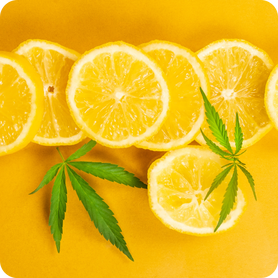|
There are over 200 chemicals in the cannabis plant. We have already discovered upwards of some of the 100+ cannabinoids found in cannabis at this time. The vital role of terpenes in cannabis is very important as there can be over 200+ of those alone. But now there are flavonoids to research and understand as well. They account for about 20 of the 200 compounds, so it's worth spending time to understand how they can affect our cannabis consumption. These three components: the terpenes, cannabinoids and flavonoids are the holy trinity of the cannabis world when looking at a cultivar profile.
What are flavonoids? Flavonoids are one of the most well-known nutritional groups in plants. They are nutrient-dense while also providing health advantages to humans and the plants from which they are derived. They aid seed development and growth by performing critical processes such as cell cycle advancement. Flavonoids also serve as a plant defense system, limiting damage from the environment. Flavonoids are members of the largest nutritional family that scientists are aware of. To date, over 6,000 flavonoids have been found. Many foods we eat every day, such as citrus fruits, blueberries, chocolate, and herbs, contain them Much like terpenes, flavonoids contribute to plant flavor and scent. But the pigment variances, make it unique. By giving each cannabis cultivar its own distinct color. Because of the hue and flavor they offer, cannabis flavonoids play an important role in how you perceive the plant with your senses, and of course, they also have therapeutic effects. Flavonoids interact with chemical receptors via the endocannabinoid system, which also includes cannabinoids and terpenes. Flavonoids, like the other two chemicals, have anti-inflammatory and antioxidant properties. Furthermore, there are Cannflavins which are a type of flavonoid found only in the cannabis plant. They belong to the flavone class of flavonoids. These flavonoids have been demonstrated to be neuroprotective, antioxidant, and anti-cancer. Most research has been done on cannflavin A, which is thought to inhibit COX-2 and reduce inflammation. “Cannflavins demonstrate a number of promising therapeutic properties” PubMed.gov Quercetin is a Cannflavins and is the most abundant flavonoid in the human diet. These are a few plants that it can be found including:
In addition to the vegetables listed above, Quercetin can be found in a variety of other brightly colored, nutrient-dense foods. This rich flavonoid functions as a pigment that gives plants their color and is found primarily in the skins and leaves. It also has numerous health benefits as a potent antioxidant that aids in the fight against free radicals by inhibiting and down-regulating inflammatory pathways. Quercetin is also an anti-inflammatory, antifungal, antimicrobial and antiviral compound that has been shown to boost physical and mental function. All information in this article is for educational purposes only. The information provided is derived from research gathered from external sources. Please check with your Cannabis Educated Primary Health Care Physician or Cannabis Therapy Consultant before beginning any new diet or lifestyle change. Dr. Pepper Hernandez ND, CTC, CNHP is a Naturopathic Nutritionist, Cannabis Therapy Consultant, the Founder, and Education Director of the Cannabis Holistic Institute. To find out more about her private practice, educational programs, videos and other offerings you can and find her on the massive inter-webs, social platforms or at drpepperhernandez.com. Go forth, Go Cannabis...
0 Comments
|
Dr. PepperRaw/Live Nutritionist, Naturopath, Cannabis Therapy Consultant, Medical Intuitive & Ascension Guide Archives
January 2024
Categories
All
|

 RSS Feed
RSS Feed